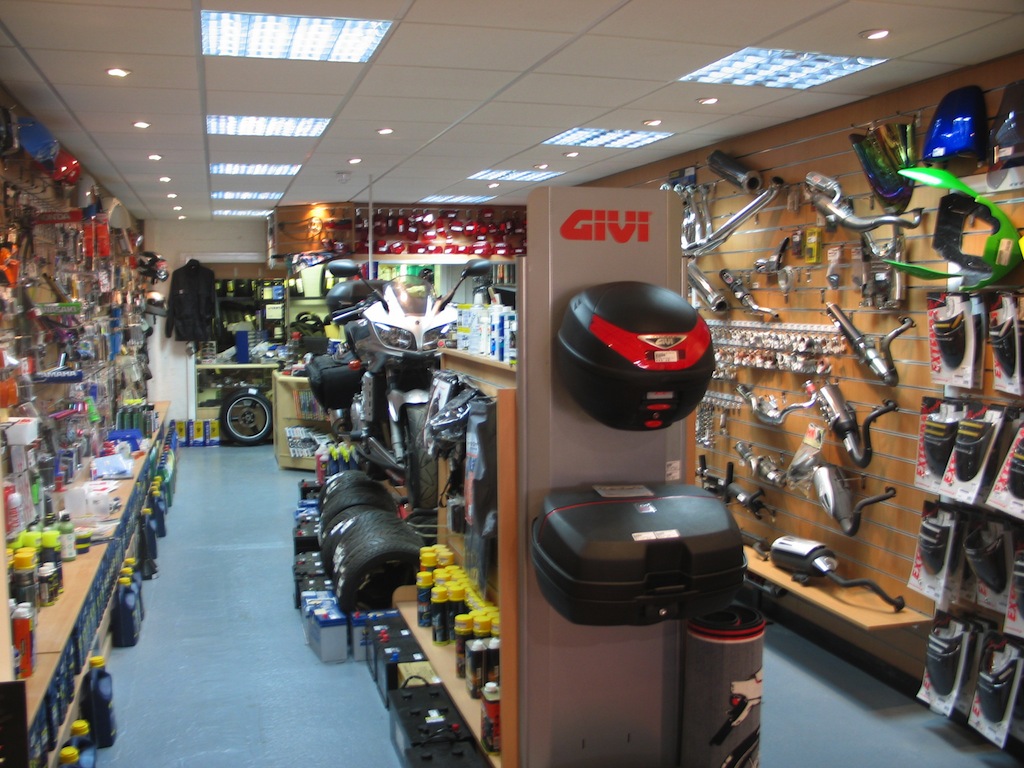Must-Have Motocross Gear: Elevate Your Riding Experience Today
Must-Have Motocross Gear: Elevate Your Riding Experience Today
Blog Article
Recognizing the Crucial Parts of a Bike: A Comprehensive Guide for Enthusiasts
For bike enthusiasts wanting to elevate their riding experience and guarantee their bikes run efficiently, comprehending the necessary elements of a motorcycle is critical. Each aspect, from the engine's elaborate workings to the vital role of the stopping devices, not only affects efficiency but likewise safety and security and comfort. This overview will walk with the essential components that every biker must recognize with, making it possible for notified options in both upkeep and potential upgrades. As we start this expedition, one must ask: how does each component communicate to produce the seamless adventure every lover looks for?
Engine Components

The camshaft plays an essential duty in regulating the timing of the engine's valves, ensuring the accurate opening and closing essential for reliable fuel and air consumption, as well as exhaust expulsion. This timing is essential to preserving ideal engine efficiency and efficiency. Furthermore, the carburetor or gas shot system, depending upon the motorcycle version, is in charge of blending air with gas in the right proportion for combustion.
The air conditioning system, either air or liquid-based, works to preserve the engine's temperature within operational limits, preventing overheating and making certain long life - motocross parts nz. Each component, meticulously developed and incorporated, adds to the smooth operation of the engine, defining the motorcycle's power outcome and total performance
Transmission System
Indispensable to the bike's performance, the transmission system makes certain effective power transfer from the engine to the wheels. This system makes up a number of important parts, including the clutch, gearbox, and final drive, each playing a crucial duty in converting the engine's power into motion. The clutch, typically operated by a hand bar, offers to disengage the engine and engage from the transmission, allowing for smooth equipment adjustments and regulated velocity.
The gearbox, usually described as the transmission correct, includes a set of gears that bikers can by hand shift through to adjust the bike's speed and torque result. These equipments are organized in a sequence that makes it possible for the motorcycle to speed up efficiently and keep ideal engine efficiency across different rates. Many motorbikes make use of a sequential transmission, calling for the cyclist to move gears in a fixed order.
Braking Mechanisms
While understanding the transmission system is crucial to harnessing a bike's power, similarly vital is the ability to manage and stop that power properly, which is where braking devices enter into play. Brakes are crucial for safety and efficiency, giving the rider with the required control to navigate various surfaces and conditions. Normally, bikes feature her latest blog 2 types of stopping systems: disc brakes and drum brakes.
Disc brakes are much more widespread in modern motorcycles due to their remarkable performance. They consist of a brake disc, caliper, and pads. When turned on, the caliper squeezes the brake pads versus the rotating disc, transforming kinetic power into warmth, therefore reducing the wheel. This system provides better heat dissipation, consistent efficiency, and enhanced quiting power, specifically in damp problems.
Conversely, drum brakes, though much less usual, are still located in some motorcycles. They work by pressing brake footwear against the internal surface of a drum connected to the wheel. While usually less reliable in heat dissipation and stopping power, drum brakes are simpler and a lot more cost-effective.
Understanding these stopping systems' subtleties allows motorcyclists to preserve their motorcycles properly and value the design that guarantees efficient and safe stopping.
Suspension and Guiding
Suspension and steering systems are vital elements that substantially influence a motorbike's handling and adventure convenience. The suspension system, including forks at the front and shock absorbers at the rear, absorbs roadway irregularities, improving stability and control. Front forks, generally telescopic or upside down, compress and rebound to minimize effects, while back shock absorbers preserve tire call with the roadway, important for grip and security.
Guiding, centered around the handlebars, links the cyclist to the motorbike's directional control. The steering head bearings ensure smooth operation, allowing precise ability to move. Proper alignment and maintenance of these bearings are critical for predictable steering reaction and reducing biker tiredness.
The suspension's adjustability Recommended Reading is another vital facet; preload, damping, and rebound settings allow customization to fit various riding conditions and styles. This flexibility is essential for optimizing efficiency, whether browsing city roads or dealing with tough routes. Advancements like digital suspension systems offer real-time adjustments, enhancing trip quality across varied surfaces.

Electrical Systems
After ensuring a controlled and smooth experience through efficient suspension and steering systems, interest turns to the electrical systems, a pivotal facet of contemporary motorcycles. These systems play a critical duty not only in starting the engine but additionally in powering different components that boost the performance and safety and security of the bike.
At the heart of a motorbike's electrical system is the battery, which shops electric power necessary for starting the engine and powering supporting systems - mx gear nz. The alternator or generator, paired with the rectifier-regulator, makes certain the battery continues to be billed while the bike is in procedure, transforming mechanical energy into electric power and keeping voltage degrees
The ignition system, another crucial element, is accountable for sparking the air-fuel mixture in the engine's cyndrical tubes. Modern bikes usually make use of an electronic ignition system, using greater performance and dependability contrasted to standard systems.
Illumination systems, consisting of fronts lights, tail lights, and indications, are additionally vital, guaranteeing visibility and safety for the rider. Added digital components such as sensing units, control devices, and shows add to innovative features like gas shot management, anti-lock braking systems (ABS), and digital dashboards, further enhancing the riding experience.
Conclusion
A complete understanding of a bike's crucial elements, including the engine, transmission system, braking systems, suspension, steering, and electric systems, is vital for lovers aiming to maximize safety, performance, and convenience. Proficiency of these elements enables educated decisions relating to upkeep and upgrades, ultimately enhancing the riding experience. By incorporating this knowledge, cyclists can guarantee their bikes run at peak efficiency and dependability, thus taking full motorcycle accessories shop advantage of both enjoyment and long life of their cars.
For motorbike enthusiasts looking to raise their riding experience and ensure their bikes run efficiently, understanding the essential elements of a bike is extremely important.Indispensable to the motorbike's capability, the transmission system makes sure reliable power transfer from the engine to the wheels.While recognizing the transmission system is key to taking advantage of a motorcycle's power, just as important is the capacity to control and stop that power properly, which is where stopping mechanisms come right into play. Commonly, motorbikes include 2 kinds of braking systems: disc brakes and drum brakes.
A detailed comprehension of a motorcycle's crucial components, including the engine, transmission system, stopping systems, suspension, steering, and electric systems, is indispensable for enthusiasts intending to optimize convenience, efficiency, and safety.
Report this page